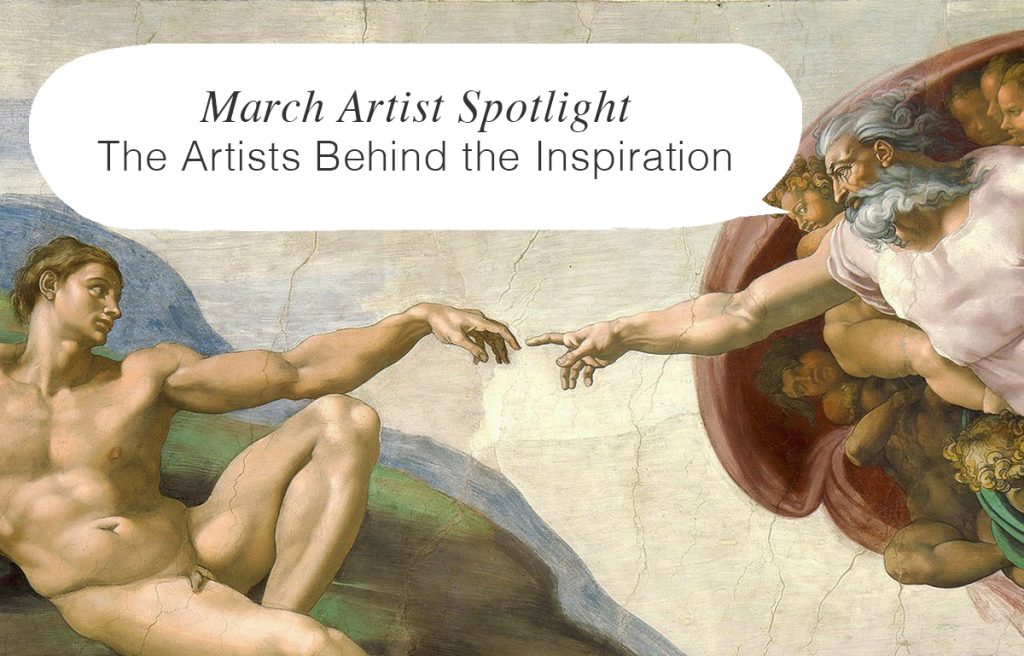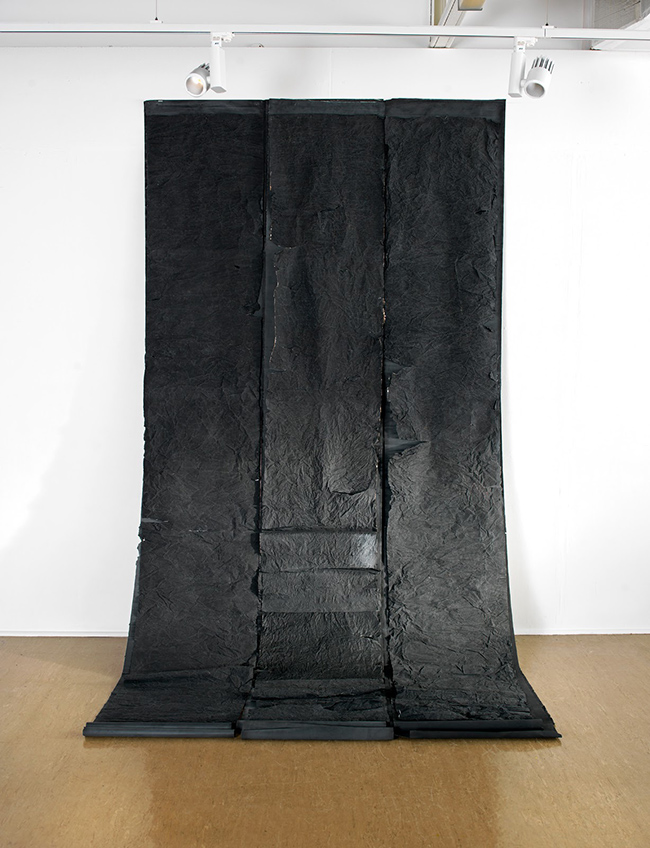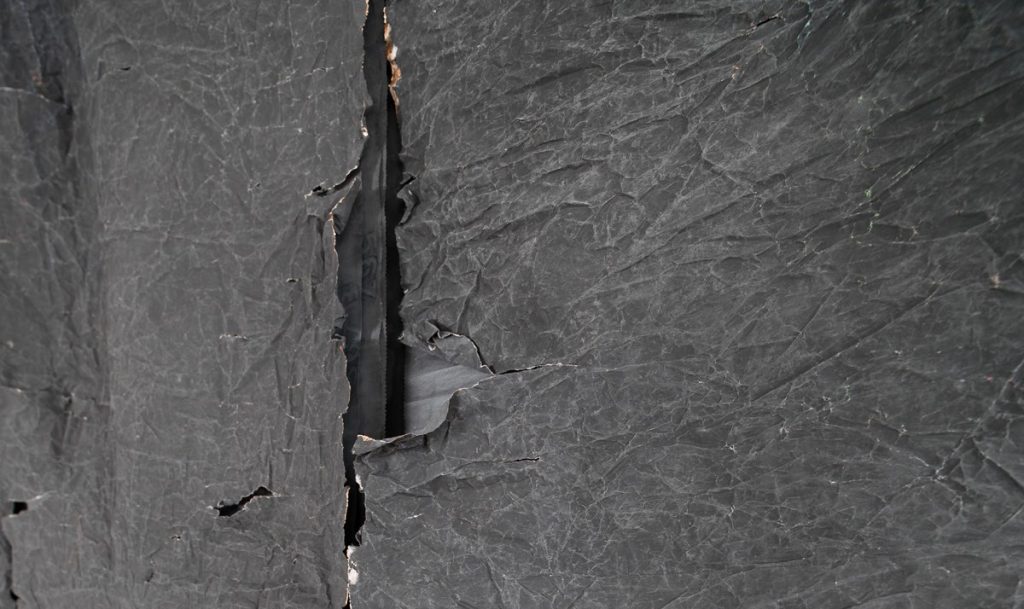
Bea Last is a Scottish artist whose work transcends traditional boundaries, offering a profound commentary on the human condition through abstract, sculptural drawings. Rooted in an ethos of sustainability, she transforms recycled, salvaged, and gifted materials into layered compositions that reflect both personal and collective experiences. Her artistic practice is deeply introspective, mirroring the unpredictability of life itself—fluid, organic, and shaped by moments of discovery.

Born in Cyprus in 1963, Last’s early exposure to war and conflict became a recurring undercurrent in her work, influencing her exploration of generational trauma, resilience, and humanitarian themes. She challenges perceptions and invites dialogue on social and political issues, particularly the enduring impact of war and the climate crisis. Despite facing barriers as a working-class woman in the art world, Last has remained steadfast in her pursuit of artistic truth, crafting work that speaks to endurance, strength, and a shared human experience.
Here is the artist’s interview.
1.) WHAT IS YOUR CREATIVE PROCESS LIKE?
Bea: I would describe my creative process as organic. A journey where one thing leads to another, sometimes with detours that lead me off into various directions. It is both intuitive and instinctive. I tend to work on a series of pieces running concurrently with each other which tends to create a dialogue between myself and the work in progress. Some pieces may be put away only to be pulled out again, perhaps a couple of years later and the timing will be perfect for where I am then. I’m constantly exploring and experimenting with the materials I use, mostly recycled or repurposed. Thoughts, Silence to be with them, is also important, allowing time to give them shape and form. Experience- everything we do and see and feel feeds in to what we create, who we are.
2.) PERSONAL EXPERIENCES THAT SHAPE YOUR WORK?
Bea: War and conflict have always been like shadows, or the background noise to my life. I was born in 1963, Cyprus, when the troubles began between the Greek Cypriots and the Turkish Cypriots. Although my folks were in the armed forces, neither were originally from the UK and they felt more at home living with the locals. We lived in a village near the front line . Memories of Bullet Holes and peace keeping troops drinking tea in the kitchen. Shadowing this the Memories and stories from my mother who was Maltese.
She was aged 10 when the tiny island of Malta sustained two weeks of consistent bombing during WWII. She lived this trauma throughout her life until she passed aged 90. Her stories were dark and full of fear and at some point my younger self would wonder if they were her memories or mine. I then began to explore generational trauma.
3.) WHAT CHALLENGE DO YOU FACE AS AN ARTIST?
Bea: There have been and still are many challenges i personally have to face. Growing up through the 60’s and 70’s into the 1980’s as a woman has had its barriers. This landscape has changed over time, however there is still a long , long, long, way to go. During that era, attitudes were dreadful. I once walked out of an interview, for application to art school as it was insinuated that i was stupid because I came from a single parent family (widowed) Socio-economics …. its a known fact that artists from working class backgrounds do not do as well as those from more privileged backgrounds. I hear recent statistics according to the National Society for Mentors UK, say that only 22% of artists from a working class background currently work in the creative sector. I would say I have had to work harder
and hold on to my passion, drive and self belief in order to navigate the creative profession. Finances are always a huge barrier.
4.) WHAT DO YOU WANT PEOPLE TO FEEL WHEN THEY SEE YOUR ART?
Bea: Connection to humanity. The fragility and vulnerability that makes us human. Endurance and strength. That we are all one no matter your colour, creed or heritage. We all bleed. That through the trauma of conflict and war, the human spirit will endure, which gives me hope. I tend to create with the abstract , signposting in various ways as to where and what I am personally responding to. This in turn leaves interpretation open to those that wish to engage with it. My work can be seen as challenging thought and understanding, highlighting other points of view, in turn creating dialogue and conversation.
Bea Last’s work is a powerful testament to the resilience of the human spirit. Through her sculptural drawings, she invites viewers to engage with themes of fragility, endurance, and unity, reminding us that despite our differences, we are all connected. Her ability to translate personal and historical narratives into abstract forms fosters deep reflection and conversation. As she continues to push boundaries, her work remains a visual and emotional anchor for those who seek to understand the impact of conflict, trauma, and hope. In a world constantly shifting, Last’s art stands as a quiet yet unyielding force of expression.


